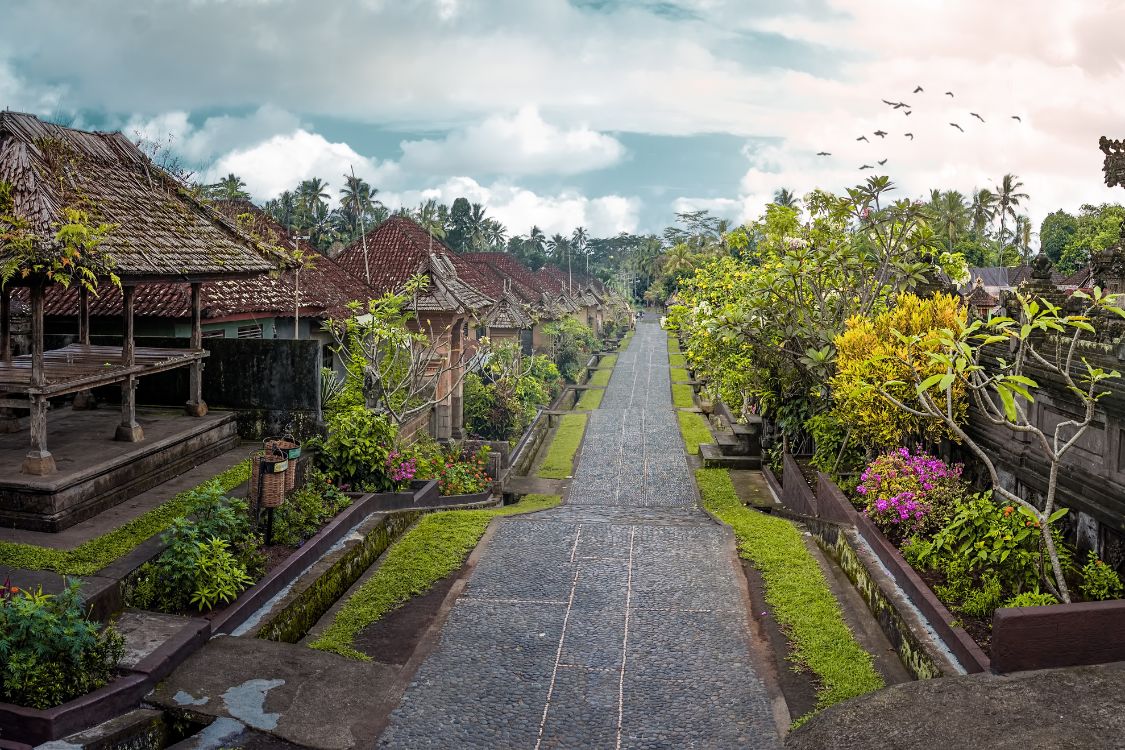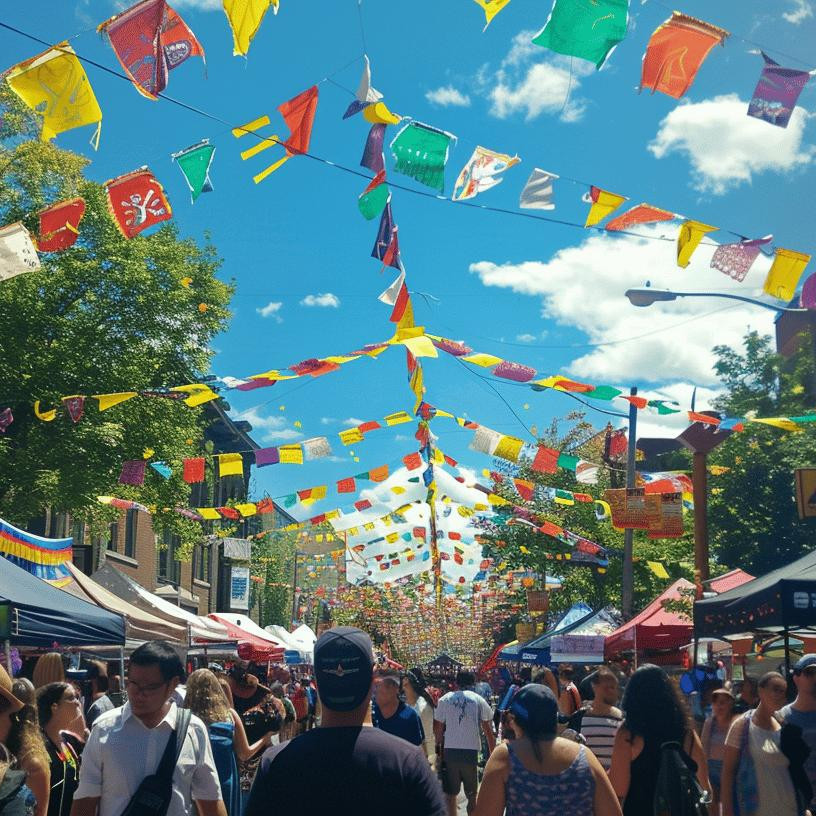Can you imagine a stormy sky clouding your dream vacation to paradise? Timing is everything when planning a visit to Indonesia, where weather can transform a serene getaway into a damp escapade. The island archipelago’s tropical climate is divided simply into two seasons: wet and dry. To bask in sunny beaches or wander undisturbed rainforests, knowing the best time to travel is key. This guide delves into Indonesia’s climatic phases, spotlighting why the dry season days brimming with sunshine should be your choice for exploration and adventure.
Table of Contents
ToggleUnderstanding Indonesia’s Weather Seasons

Indonesia experiences a tropical climate, characterized by its two distinct seasons: the dry season and the rainy season. The dry season extends from May to October, providing more predictable weather with less rainfall and lower humidity. Conversely, the rainy season occurs from November to April, marked by heavier precipitation and higher humidity levels. This clear division allows travelers to plan their visits according to the weather conditions most favorable for their desired activities.
The dry season is widely regarded as the optimal time for visiting Indonesia, particularly for engaging in outdoor adventures. With minimal rainfall and abundant sunshine, this period is ideal for activities such as snorkeling, diving, and exploring the vast array of temples and natural wonders. Popular destinations like Bali, Java, and the Gili Islands become more accessible during these months, offering an array of cultural and recreational experiences.
While the rainy season may deter some tourists, it offers unique advantages, including fewer crowds and lush, vibrant landscapes. The frequent rains, typically occurring in the afternoon or evening, rejuvenate the environment, making it a favorable time for photography and exploring Indonesia’s rainforests. Travelers seeking a more relaxed and budget-friendly experience might find this period appealing due to the reduced number of visitors and potential discounts on accommodations and tours.
- Consider the dry season for outdoor and water-based activities.
- Be prepared for higher humidity during the rainy season.
- Expect fewer tourists and lower prices in the rainy season.
- Plan for potential rain interruptions in activities from November to April.
- Use local weather apps to optimize daily travel plans.
Month-by-Month Guide to Indonesia’s Weather
Understanding Indonesia’s weather patterns on a month-by-month basis is crucial for planning a successful trip. The climate varies significantly throughout the year, impacting the types of activities and experiences available to travelers. Each month offers unique opportunities, from indulging in cultural festivals to exploring pristine beaches or lush rainforests.
January to March
What are the wettest months in Indonesia? January and February are known for heavy rainfall, making this period ideal for cultural exploration and indoor activities. Museums, galleries, and local markets offer engaging alternatives to outdoor adventures. In March, while the rains persist, they start to lessen, providing an opportunity to visit Indonesia’s rainforests as the landscapes remain vibrant and lush.
April to June
When does the dry season begin in Indonesia? April marks the start of drier weather, creating the perfect conditions for beach lovers and festival enthusiasts. As the rains recede, coastal areas become prime spots for sunbathing and water sports. May and June continue to offer dry and sunny days, making it an excellent time for outdoor activities and cultural festivals like the Bali Arts Festival.
July to September
What is the peak dry season in Indonesia? July to September represents the height of the dry season, ideal for outdoor exploration and adventures. The weather is consistently sunny, with minimal rainfall, making it perfect for activities such as hiking, diving, and exploring Indonesia’s vast array of natural and cultural sites. This period is particularly favorable for visiting popular destinations like Bali and Java.
October to December
When does rainfall return in Indonesia? October signals the return of rain, gradually increasing through November and December. This time is best suited for rainforest visits, as the rains rejuvenate the flora, offering spectacular greenery and wildlife sightings. While outdoor activities may be limited, the weather is suitable for enjoying Indonesia’s rich biodiversity and engaging in cultural experiences.
Travelers should consider these monthly weather variations when planning their trips to Indonesia. Whether seeking beach relaxation, cultural immersion, or rainforest exploration, understanding the seasonal changes can enhance the travel experience significantly.
Optimal Times for Bali Travel

Bali, renowned for its stunning beaches, vibrant culture, and lush landscapes, remains a top travel destination year-round. Nonetheless, the best time to visit largely depends on individual preferences for weather conditions and crowd levels. The island experiences a dry season from April to September, attracting travelers seeking sunny days and outdoor activities.
Peak Tourist Season
When is the peak tourist season in Bali? July and August are considered the peak months, drawing large numbers of tourists. During this period, Bali experiences its driest weather, making it ideal for sunbathing, surfing, and exploring the island’s cultural sites. However, the influx of visitors results in crowded attractions and higher accommodation prices. Travelers should expect bustling beaches and plan accommodations well in advance to secure preferred lodging options.
Shoulder Season
What months are part of Bali’s shoulder season? May, June, and September offer a balance between favorable weather and fewer tourists. May and June enjoy dry conditions and warm temperatures, ideal for outdoor activities without the peak season’s throngs. September, with its pleasant weather, provides an excellent opportunity for beach relaxation and exploration at more affordable prices. Visitors can enjoy Bali’s natural beauty and cultural experiences with less competition for space and resources.
Rainy Season
When does Bali experience its rainy season? December to February marks Bali’s rainy season, characterized by heavy rain and high humidity. While outdoor activities may be limited during this time, travelers seeking a more relaxed holiday can take advantage of lower prices and fewer tourists. The rain often falls in short, intense bursts, allowing for enjoyment of indoor cultural activities and relaxation in between showers. This period is ideal for those looking for budget-friendly travel options and a more leisurely pace.
| Month | Best Activities |
|---|---|
| May | Outdoor exploration and beach relaxation |
| July | Surfing and cultural site visits |
| September | Beach activities and lower-cost travel |
| December | Indoor cultural activities and relaxation |
Exploring Java, Sumatra, and Other Islands
Java offers a rich tapestry of cultural experiences and natural beauty, making it a compelling destination for travelers. When is the best time to visit Java? The most favorable period is from April to October, coinciding with the dry season, which provides optimal weather for exploring its diverse landscapes. This timeframe also aligns with several cultural festivals, such as the Waisak Festival at Borobudur Temple, which attracts visitors seeking to immerse themselves in local traditions. Travelers can enjoy the vibrant cities, such as Jakarta and Yogyakarta, and explore historical sites without the interruption of heavy rains.
Sumatra, known for its rugged terrain and rich biodiversity, is best visited from June to September. Why is this the ideal time? These months offer drier conditions that are perfect for trekking and wildlife encounters, especially in places like Bukit Lawang, where travelers can observe orangutans in their natural habitat. Other islands like Komodo and Flores are also best explored between June and August. During this period, the seas are calm, making it ideal for island hopping and viewing the famed Komodo dragons. These islands offer unique experiences for nature enthusiasts and those interested in adventure travel.
- Plan visits to Java from April to October for better weather and cultural events.
- Target Sumatra from June to September for trekking and wildlife viewing.
- Explore Komodo and Flores between June and August for optimal island activities.
- Book accommodations early during peak travel months to secure the best options.
Indonesia’s Cultural Festivals and Events
Cultural festivals in Indonesia are a significant aspect of the country’s vibrant and diverse heritage. These events offer travelers an unparalleled opportunity to experience the rich traditions and customs of the Indonesian archipelago. Festivals are typically celebrated with a blend of music, dance, and rituals, providing unique insights into the local culture and community spirit. The dry season, stretching from May to October, is generally the best time to attend these festivals, as the pleasant weather enhances the overall experience and facilitates travel across the islands.
Notable cultural events include Nyepi in Bali, celebrated in March, which marks the Balinese New Year with a day of silence, meditation, and fasting. In May, the Waisak Festival in Java commemorates the birth, enlightenment, and death of Buddha, attracting thousands of pilgrims to Borobudur Temple for a mesmerizing procession. Pasola in Sumba, occurring in February or March, is a thrilling traditional horseback battle that highlights the island’s unique customs. These festivals not only showcase Indonesia’s cultural diversity but also offer travelers the chance to engage with local communities in meaningful ways.
- Book accommodations early, as festival times can lead to high demand.
- Respect local customs and dress appropriately for cultural events.
- Arrive early to secure a good viewing spot at popular festivals.
Travel Tips for Visiting Indonesia

Is Indonesia generally safe for travelers? Yes, it is considered a safe destination, though it’s important for travelers to stay informed about local advisories and any potential natural disasters. Keeping up-to-date with local news and advisories can help ensure a smooth and secure trip. It’s advisable to register with your embassy and be aware of the nearest medical facilities and emergency contacts.
What should travelers pack for a trip to Indonesia? Packing should cater to the season of travel. During the dry season, from May to October, lightweight clothing and swimwear are essential for comfort in the warm weather. Conversely, in the rainy season, from November to April, waterproof gear, such as raincoats and waterproof bags, is crucial to stay dry during sudden downpours. Insect repellent is also recommended year-round, especially when visiting rural or forested areas.
What tools can assist in planning a trip to Indonesia? Weather apps are indispensable for planning daily activities, especially during the rainy season, as they provide timely updates on weather conditions. These apps help travelers make informed decisions and adjust plans accordingly. For a more personalized travel experience, using a service like Xpat Journeys can offer valuable insights and assist in crafting well-informed travel itineraries tailored to individual preferences.
Final Words
Exploring the best time to travel to Indonesia requires understanding its diverse weather patterns and cultural offerings. Each season brings unique experiences, from vibrant cultural festivals during the dry months to lush landscapes in the rainy season. These insights serve to enhance the travel planning process.
Whether interested in the serenity of Bali’s beaches, the cultural richness of Java, or the adventurous spirit of Sumatra and other islands, each visit can be tailored to individual preferences. With proper preparations, travelers can enjoy Indonesia’s natural wonders and rich traditions year-round.
FAQ
Q: Best time to travel to Indonesia from USA?
A: The best time to travel from the USA to Indonesia is during the dry season, which runs from May to October. Clear skies and favorable weather make it ideal for outdoor activities and exploration.
Q: Worst time to visit Indonesia?
A: The worst time to visit Indonesia is generally during the rainy season from November to April. Heavy rainfall can impede travel and outdoor activities, particularly from January to February.
Q: Best time to visit Indonesia Bali?
A: Bali is best visited during the dry season from April to September. May, June, and September provide good weather with fewer tourists compared to peak months.
Q: Indonesia weather by month?
A: Indonesia experiences varying weather patterns, with January and February being the wettest months. April to September sees dry conditions, suitable for outdoor activities, while October and November signal the return of rain.
Q: Indonesia best places to visit?
A: Key places to visit in Indonesia include Bali for its beaches, Java for cultural sites like Borobudur, Sumatra for wildlife, and Raja Ampat for diving opportunities.
Q: Best time to visit Raja Ampat?
A: The best time to visit Raja Ampat is from October to April for optimal diving conditions, although June to September also offers decent weather with fewer crowds.
Q: Rainy season in Indonesia?
A: Indonesia’s rainy season spans from November to April, bringing lush landscapes but also more rain, making outdoor activities more challenging.
Q: Indonesia weather in April?
A: In April, Indonesia transitions from the rainy season to the dry season. It’s an excellent time for beach activities and festivals with relatively moderate temperatures.
Q: What is the best month to go to Indonesia?
A: July through August are considered the best months for visiting Indonesia due to minimal rainfall and ideal conditions for outdoor activities.
Q: What is the rainy season in Indonesia?
A: Indonesia’s rainy season occurs from November through April, characterized by frequent rainfall and increased humidity.
Q: What is the best month to visit Bali, Indonesia?
A: The best month to visit Bali is in May or September, offering pleasant weather and fewer tourists compared to the peak months of July and August.
Q: What are the best and worst months to go to Bali?
A: The best months to visit Bali are May, June, and September for great weather and reduced crowds. Conversely, December and January are the worst due to heavy rainfall.
Hazel Wall is a passionate traveler, writer, and explorer dedicated to sharing her experiences and insights with fellow adventurers. With a background in journalism and a deep love for discovering new cultures, Hazel has journeyed across continents, immersing herself in diverse landscapes and traditions.





